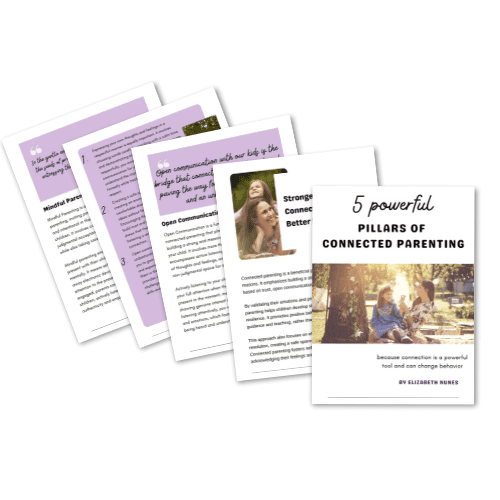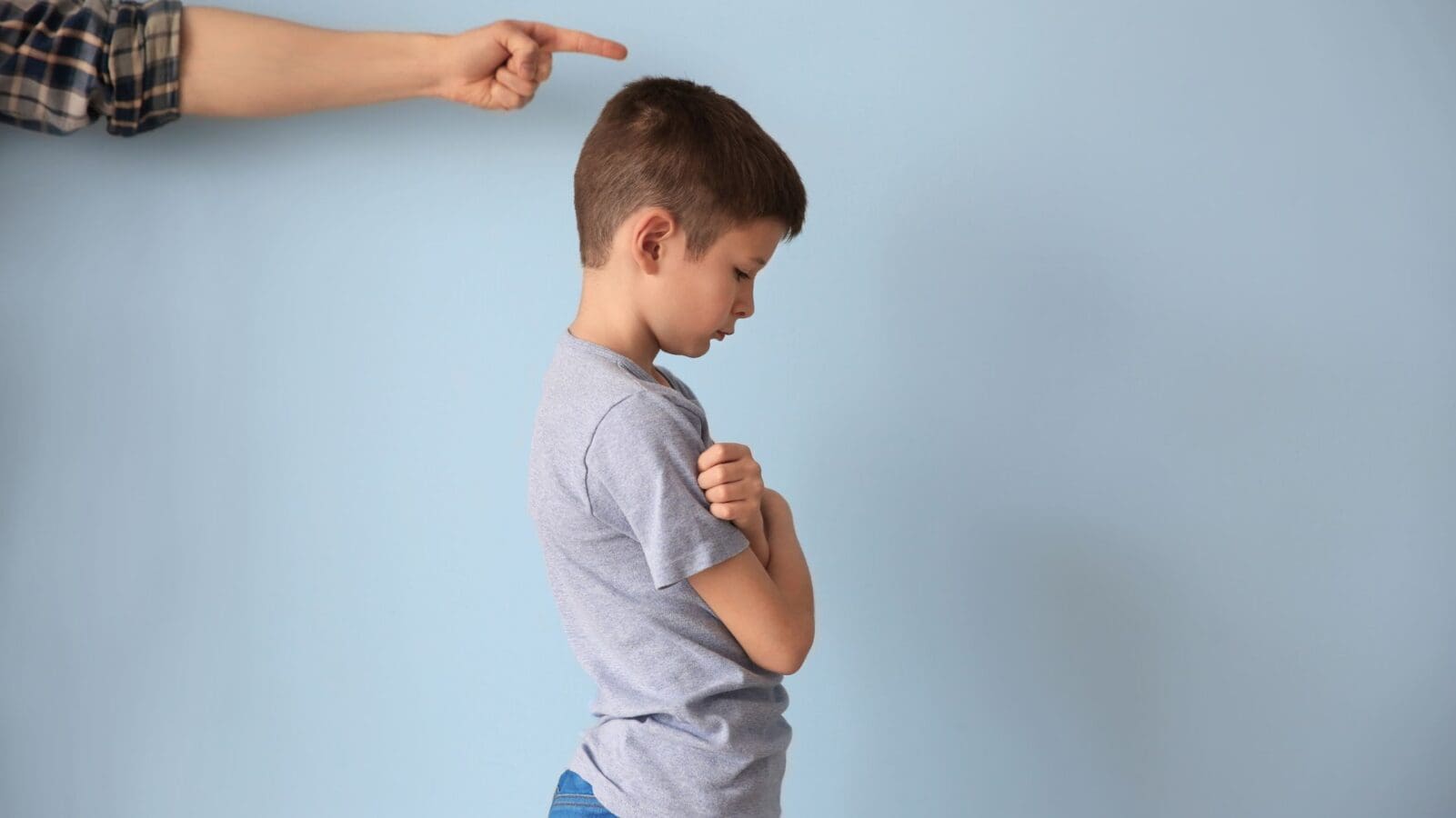70 Ways To Discipline Kids (Without Punishment)
As a mom of three, I’ve had my fair share of parenting challenges.
Today, I want to talk about a topic close to my heart: How to Teach Children Without Punishment!
It’s a journey I’ve navigated through trial, error, and a lot of coffee.
This post may contain affiliate links. Full privacy policy and disclosure here.
How to Teach Kids Lessons Without Punishment
1. Positive Reinforcement:
Positive reinforcement involves offering praise, rewards, or tokens of acknowledgment when children exhibit good behavior. This technique encourages them to repeat those positive actions, as they associate them with positive outcomes. For example, when a child completes their homework diligently, you can offer words of praise or a small reward to reinforce their commitment to studying.
2. Effective Communication:
Effective communication is the cornerstone of a healthy parent-child relationship. When your child misbehaves, take the time to engage in a calm and clear conversation. Listening attentively to their perspective allows you to better understand their motivations and feelings, which can lead to more effective discipline strategies.
3. Model Good Behavior:
Children often learn by observing the behavior of their parents or caregivers. By modeling the behavior you want them to exhibit, you provide them with a positive example to follow. If you want your child to be respectful and kind, demonstrate these qualities in your interactions with others.
4. Natural Consequences:
Natural consequences involve allowing children to face the natural outcomes of their actions. For instance, if a child refuses to wear a coat on a cold day, they might feel cold and learn the importance of dressing appropriately. While safety should always be a priority, allowing natural consequences can be a powerful teacher.
5. Logical Consequences:
Unlike natural consequences, logical consequences are imposed by caregivers and are directly related to a child’s behavior. For instance, if a child repeatedly leaves their toys scattered around the house, a logical consequence might be temporarily limiting their access to those toys until they demonstrate better cleanup habits.
6. Empathy:
Empathy is an essential skill in effective discipline. It involves acknowledging and understanding your child’s feelings and emotions. When children feel understood and validated, they are more likely to cooperate and behave positively. Show empathy by saying things like, “I understand you’re feeling frustrated right now. Let’s talk about it.”
7. Problem-Solving:
Encourage children to take an active role in resolving their own problems. By involving them in the process of finding solutions, you teach them valuable critical-thinking and decision-making skills. This approach empowers children to handle challenges independently.
8. Active Listening:
Active listening is a crucial aspect of effective communication. When children feel heard and respected, they are more likely to cooperate. To practice active listening, give your full attention, ask open-ended questions, and avoid interrupting or judging their perspective.
9. Time-In:
Spending quality time with your child is essential for building a strong, nurturing bond. Time-ins involve setting aside moments to connect, engage in activities they enjoy, and build a sense of security and trust within the parent-child relationship.
10. Teach Responsibility:
Assigning age-appropriate chores and responsibilities at home instills a sense of accountability and competence in children. This helps them understand the importance of contributing to the family and taking care of their environment.
11. Consistent Routine:
Establishing a consistent daily routine provides children with structure and predictability. Knowing what to expect helps them feel secure and less anxious, which can reduce the likelihood of challenging behaviors.
12. Use Positive Language:
When communicating with children, it’s essential to frame instructions and feedback positively. Instead of saying, “Stop making a mess,” you can say, “Let’s keep our play area tidy.”
13. Set Clear Expectations:
Clearly communicate rules and expectations, so children understand what is required of them. Clarity helps them know the boundaries and what behaviors are expected.
14. Positive Time-Outs:
Positive time-outs involve giving children a designated space and time to calm down and reflect on their actions. It’s not a form of punishment but a way to help them regulate their emotions and behavior.
15. Calm Down Corner:
Create a calm and designated space where children can go to manage their emotions when they’re feeling overwhelmed or upset. This space should have calming tools or activities to help them self-regulate.
16. Offer Choices:
Providing children with choices within reasonable limits empowers them and allows them to develop decision-making skills. For example, you can ask, “Would you like to wear the red shirt or the blue shirt today?”
17. Apology and Making Amends:
Teach children the importance of apologizing when they have wronged someone and making amends to make things right. This helps them understand the impact of their actions on others and fosters empathy.
18. Natural Rewards:
Similar to natural consequences, natural rewards involve letting children experience the positive outcomes of their actions. If they complete their homework on time, they may have more free time to engage in preferred activities.
19. Goal Setting:
Help children set and work towards achievable goals. This can be related to academic, personal, or behavioral goals. Celebrate their achievements along the way to reinforce their efforts.
20. Conflict Resolution Skills:
Teach children how to resolve conflicts with peers or siblings through peaceful and constructive means. This includes using “I” statements, listening actively, and seeking compromise.
21. Gratitude:
Encourage children to express gratitude by acknowledging and appreciating the things and people in their lives. Practicing gratitude fosters a positive outlook and empathy towards others.
22. Team Sports:
Participating in team sports provides children with opportunities to learn teamwork, cooperation, and sportsmanship. These skills are essential for effective social interactions.
23. Active Play:
Promote physical activity and active play as a way for children to release energy and emotions in a positive and healthy manner. Regular physical activity contributes to their overall well-being.
24. Art and Creativity:
Encourage artistic expression as a means for children to manage their emotions and creativity. Art activities allow them to express themselves when words may fail.
25. Read Together:
Share books with valuable life lessons and moral stories. Reading together not only promotes literacy but also provides opportunities for discussions about character and values.
26. Cook as a Family:
Cooking meals together as a family not only teaches valuable life skills but also fosters teamwork and promotes healthy eating habits.
27. Pet Care:
Taking care of a pet instills a sense of responsibility, empathy, and consistency in children. It teaches them about the needs and well-being of others.
28. Environmental Awareness:
Educate children about environmental conservation and eco-friendly practices. Teaching them to care for the planet and its resources promotes responsibility and stewardship.
29. Volunteering:
Engaging in community service or volunteering together as a family exposes children to the importance of giving back to the community and helping those in need.
30. Journaling:
Encourage children to keep journals as a tool for self-reflection and emotional expression. Journaling can help them process their thoughts and feelings.
31. Mindfulness:
Practice mindfulness and relaxation techniques together. These techniques can help children manage stress, anxiety, and emotional regulation.
32. Nature Exploration:
Spend time in nature to foster a connection with the environment. Nature exploration allows children to appreciate the beauty and wonder of the natural world.
33. Gardening:
Involving children in gardening activities teaches them patience, responsibility, and a connection to the earth. They learn about nurturing and growth through gardening.
34. Active Listening:
Active listening is a crucial aspect of effective communication. When children feel heard and respected, they are more likely to cooperate. To practice active listening, give your full attention, ask open-ended questions, and avoid interrupting or judging their perspective.
35. Time-In:
Spending quality time with your child is essential for building a strong, nurturing bond. Time-ins involve setting aside moments to connect, engage in activities they enjoy, and build a sense of security and trust within the parent-child relationship.
36. Teach Responsibility:
Assigning age-appropriate chores and responsibilities at home instills a sense of accountability and competence in children. This helps them understand the importance of contributing to the family and taking care of their environment.
37. Consistent Routine:
Establishing a consistent daily routine provides children with structure and predictability. Knowing what to expect helps them feel secure and less anxious, which can reduce the likelihood of challenging behaviors.
38. Use Positive Language:
When communicating with children, it’s essential to frame instructions and feedback positively. Instead of saying, “Stop making a mess,” you can say, “Let’s keep our play area tidy.”
39. Set Clear Expectations:
Clearly communicate rules and expectations so children understand what is required of them. Clarity helps them know the boundaries and what behaviors are expected.
40. Positive Time-Outs:
Positive time-outs involve giving children a designated space and time to calm down and reflect on their actions. It’s not a form of punishment but a way to help them regulate their emotions and behavior.
41. Calm Down Corner:
Create a calm and designated space where children can go to manage their emotions when they’re feeling overwhelmed or upset. This space should have calming tools or activities to help them self-regulate.
42. Offer Choices:
Providing children with choices within reasonable limits empowers them and allows them to develop decision-making skills. For example, you can ask, “Would you like to wear the red shirt or the blue shirt today?”
43. Apology and Making Amends:
Teach children the importance of apologizing when they have wronged someone and making amends to make things right. This helps them understand the impact of their actions on others and fosters empathy.
44. Natural Rewards:
Similar to natural consequences, natural rewards involve letting children experience the positive outcomes of their actions. If they complete their homework on time, they may have more free time to engage in preferred activities.
45. Goal Setting:
Help children set and work towards achievable goals. This can be related to academic, personal, or behavioral goals. Celebrate their achievements along the way to reinforce their efforts.
46. Conflict Resolution Skills:
Teach children how to resolve conflicts with peers or siblings through peaceful and constructive means. This includes using “I” statements, listening actively, and seeking compromise.
47. Gratitude:
Encourage children to express gratitude by acknowledging and appreciating the things and people in their lives. Practicing gratitude fosters a positive outlook and empathy towards others.
48. Team Sports:
Participating in team sports provides children with opportunities to learn teamwork, cooperation, and sportsmanship. These skills are essential for effective social interactions.
49. Active Play:
Promote physical activity and active play as a way for children to release energy and emotions in a positive and healthy manner. Regular physical activity contributes to their overall well-being.
50. Art and Creativity:
Encourage artistic expression as a means for children to manage their emotions and creativity. Art activities allow them to express themselves when words may fail.
51. Read Together:
Share books with valuable life lessons and moral stories. Reading together not only promotes literacy but also provides opportunities for discussions about character and values.
52. Cook as a Family:
Cooking meals together as a family not only teaches valuable life skills but also fosters teamwork and promotes healthy eating habits.
53. Pet Care:
Taking care of a pet instills a sense of responsibility, empathy, and consistency in children. It teaches them about the needs and well-being of others.
54. Environmental Awareness:
Educate children about environmental conservation and eco-friendly practices. Teaching them to care for the planet and its resources promotes responsibility and stewardship.
55. Volunteering:
Engaging in community service or volunteering together as a family exposes children to the importance of giving back to the community and helping those in need.
56. Journaling:
Encourage children to keep journals as a tool for self-reflection and emotional expression. Journaling can help them process their thoughts and feelings.
57. Mindfulness:
Practice mindfulness and relaxation techniques together. These techniques can help children manage stress, anxiety, and emotional regulation.
58. Nature Exploration:
Spend time in nature to foster a connection with the environment. Nature exploration allows children to appreciate the beauty and wonder of the natural world.
59. Gardening:
Involving children in gardening activities teaches them patience, responsibility, and a connection to the earth. They learn about nurturing and growth through gardening.
60. Outdoor Adventures:
Engaging in outdoor adventures like hiking, camping, or exploring natural settings provides children with opportunities to develop resilience, teamwork, and an appreciation for nature.
61. Music and Dance:
Encourage children to express themselves through music and dance. Music and dance activities promote emotional expression and creativity.
62. Science Experiments:
Conduct simple science experiments at home to spark curiosity and foster a love for learning. Science experiments encourage critical thinking and problem-solving skills.
63. Board Games and Puzzles:
Play board games and solve puzzles together as a family to promote cognitive skills, strategic thinking, and cooperation.
64. Cultural Exploration:
Expose children to different cultures, traditions, and cuisines through cultural events, festivals, and international cuisine. This helps broaden their horizons and promote cultural awareness.
65. Storytelling and Creative Writing:
Encourage storytelling and creative writing to stimulate imagination and develop language skills. Children can create their stories or share their experiences through writing.
66. DIY Projects:
Engage in do-it-yourself (DIY) projects that involve creativity and problem-solving. DIY projects can range from building simple structures to crafting unique items.
67. Exploration of Historical Sites:
Visit historical sites, museums, and landmarks to learn about history, culture, and the world’s heritage. This can spark a curiosity for history and appreciation for diverse cultures.
68. Travel and Cultural Immersion:
Travel to different places, whether near or far, to immerse children in different environments, languages, and cultures. Travel experiences can be both educational and enriching.
69. Mentorship and Role Models:
Connect children with mentors or positive role models who can inspire and guide them in various aspects of life.
70. Civic Engagement:
Involve children in community service or civic activities that address social issues and contribute to positive change in their communities.

Get Your Free Download
Take your parenting journey to the next level with our comprehensive ebook on Connected Parenting.
Download this ebook now and embark on a transformative parenting experience that will strengthen your bond with your child and bring joy and fulfillment to your family life.
Download Here
Teaching children without punishment is about guiding them with love, understanding, and a bit of creativity (and maybe a secret stash of chocolate for yourself). It’s a journey, not a destination, and every small step counts.
Remember, you’re doing great, fellow parents!
And on those tough days, just know that somewhere out there, another mom is also trying to figure out why her child insists on wearing a superhero cape to the grocery store.
Stay strong, stay caffeinated, and keep loving those little ones.

Want More On Parenting?
- What to Expect In Positive Parenting Solutions Course
- 17 Positive Discipline Parenting Tools to Help You Raise Confident and Resilient Kids
Sources and References
- Positive Reinforcement: The Incredible Years® Program for preschool children with autism spectrum disorder emphasizes positive behavior management, including praise, incentives, and sensory activities as rewarding consequences (Webster-Stratton, Dababnah, & Olson, 2018).
- Effective Communication: Research suggests that rewards and punishments are used by people as forms of communication to signal target behavior rather than just as reinforcement (Ho, Cushman, Littman, & Austerweil, 2019).
- Model Good Behavior and Active Play: The use of board games in teaching is highlighted for its benefits in developing communication skills, strategy creation, and problem-solving competency (Juhász, 2021). Additionally, physically active play (PAP) in early childhood curricula is emphasized for developing fundamental movement skills and literacy skills (Hussain, 2018).
- Empathy and Positive Educational Environment: Teacher Effectiveness Training Program focuses on communication methods that help create a positive educational environment, emphasizing empathy and conflict resolution (Georgieva & Dishkova, 2020).
- Problem-Solving and Conflict Resolution Skills: Teaching Personal and Social Responsibility (TPSR) model in sports and physical activity settings promotes children’s meaningful and transferable life skills, including positive behavioral changes and improved interpersonal skills (Shen, Martinek, & Dyson, 2022).
- Art and Creativity: Artistic and creative activities in preschool children’s education are shown to be effective in developing creativity and artistic abilities (Saraieva, 2021).
- Consistent Routine and Clear Expectations: The Teaching-Learning Processes study highlights the effectiveness of educational psychodrama techniques, such as role-playing, in the university setting for active learning and problem resolution skills (Maya & Maraver, 2020).






